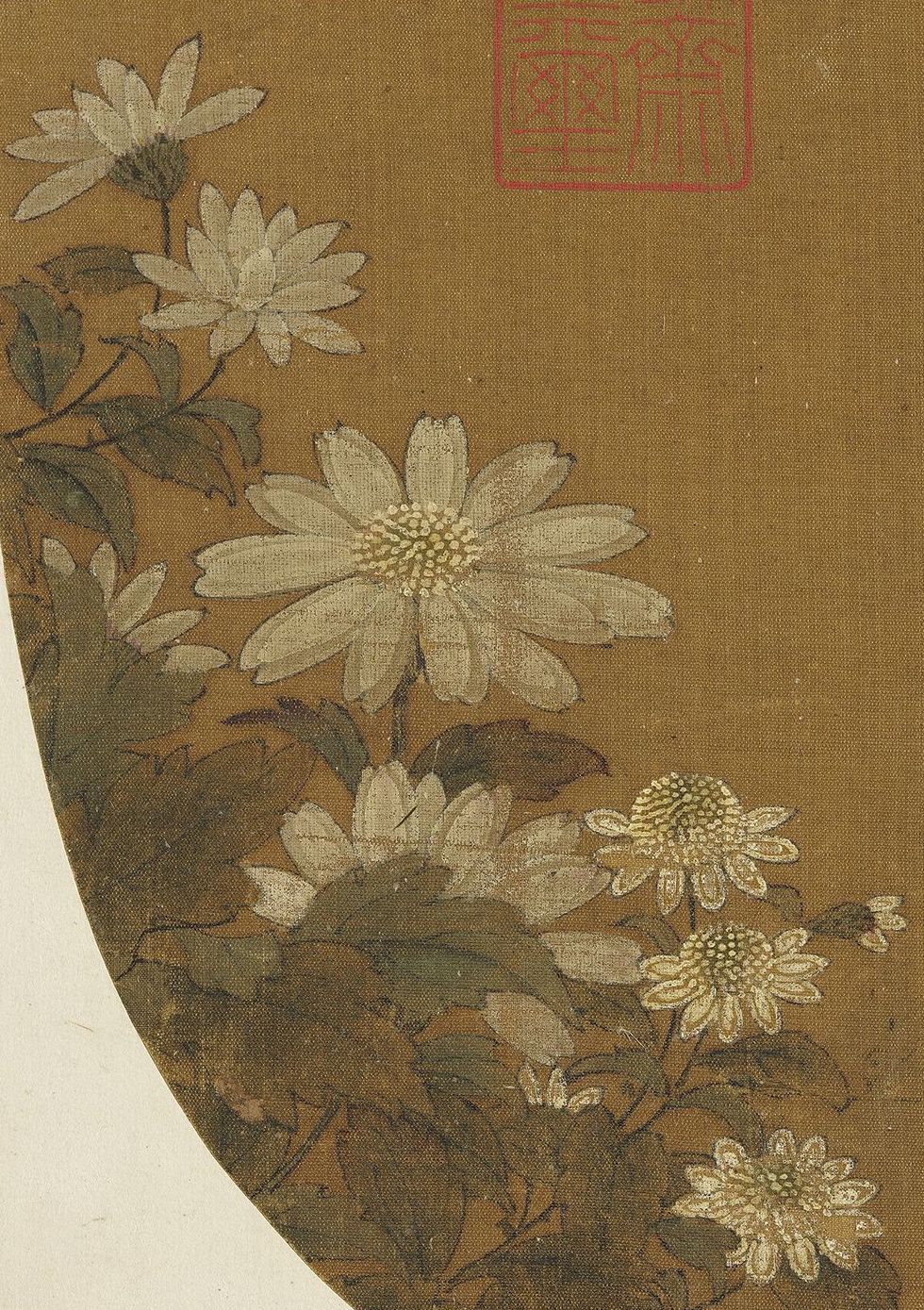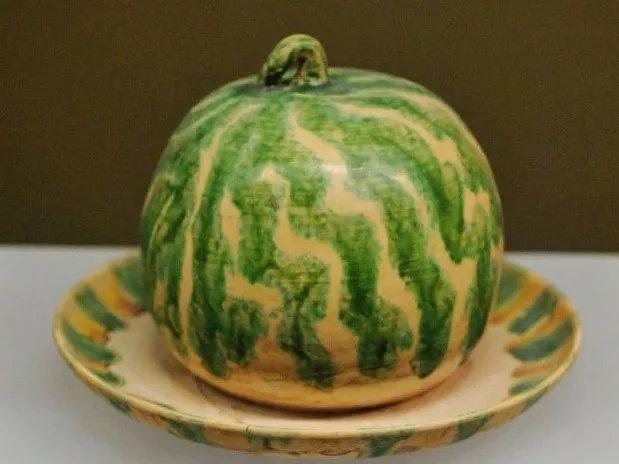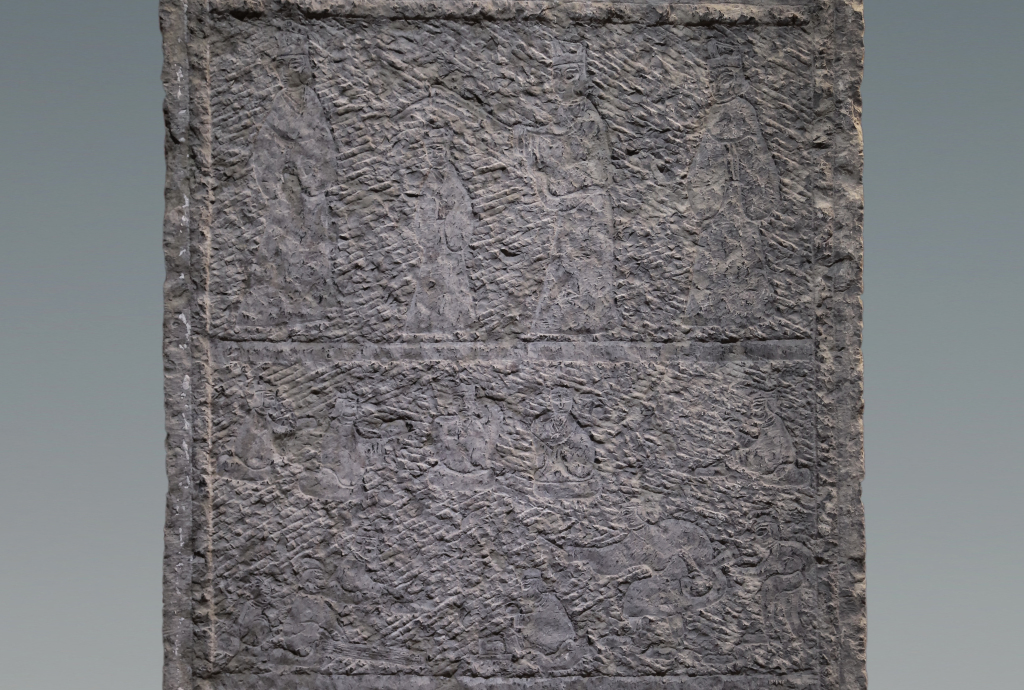
Today is the sixth day of the ninth month in the lunar calendar, marking the occasion of Cold Dew, one of the 24 solar terms. The term "Cold Dew" comes from the fact that dew condenses as the cold sets in. During this time, wild geese fly south, chrysanthemums begin to bloom, the moonlight is crisp and cold, and the leaves of the wutong tree fall. The Tang poet Li Xian captured this in verse with, "Chrysanthemum flowers dense with cold dew, orchids sorrowed by morning frost." The Song poet Wang Anshi wrote, "In the empty courtyard, autumn lingers long, cold dew enters the evening, making simple clothing feel mournful."
During the Cold Dew season, there's a custom in the Jiangnan region of enjoying crab while appreciating chrysanthemums, known as "Holding Claws to Admire Chrysanthemums." Many poets and literati throughout the ages have contributed verses about this. In some places, there's also a tradition of drinking "Cold Dew tea," climbing to appreciate the autumn scenery, which embodies a broad-minded attitude toward life.
The ninth month in the lunar calendar, which coincides with Cold Dew, is also known as Chrysanthemum Month, celebrating the blooming of chrysanthemums. Unlike most flowers that bloom in spring and summer, chrysanthemums are out of season; the colder and more frosty it gets, the more brilliantly they bloom. The "Chrysanthemums Begin to Bloom Yellow," one of the three phases of Cold Dew, refers specifically to the widespread flowering of chrysanthemums at this time.

Song - Lin Chun, Autumn Clear Group of Chrysanthemums (Detail), selected from the "True Art Collection (Volume One)" at the National Palace Museum, Taipei
The "Book of Rites - Monthly Regulations" records: "In the month of late autumn, chrysanthemums appear yellow," indicating that chrysanthemums bloom in autumn, originally as wild species with yellow flowers. References to chrysanthemums can be found in the "Book of Songs" from the Zhou Dynasty through the Spring and Autumn period and in Qu Yuan's "Li Sao." A line from "Li Sao" reads, "In the morning I drink the dew from magnolias, in the evening I dine on the fallen blooms of autumn chrysanthemums."
Wang Xizhi from the Eastern Jin Dynasty wrote the "Letter on Picking Chrysanthemums," composed in cursive script, consisting of five lines and 36 characters. It expresses Wang's desire to go with a friend to pick chrysanthemums. The letter displays a flowing and natural style. The content mentions: "Not sure how to spend the day, shall we pick chrysanthemums on the ninth day? I wish to go together, but I don’t know if it will be fine weather."

Wang Xizhi's "Letter on Picking Chrysanthemums"
Tao Yuanming (355—417 AD) from the Jin Dynasty had a deep affection for chrysanthemums, which is well-known. He wrote many famous poems about them, such as "Plucking chrysanthemums by the eastern fence, I see the distant South Mountain" and "The autumn chrysanthemum has good color, and the dew captures its essence," which are still widely quoted today. At that time, scholars admired his noble character and often planted chrysanthemums for their enjoyment, praising chrysanthemums as "fragrant amidst a hundred grasses, beautiful among the finest flowers."

(Attributed to) Ming - Tang Yin, "Picking Chrysanthemums" Scroll (Detail), National Palace Museum, Taipei
Throughout history, many notable paintings and calligraphies depict chrysanthemums. They range from intricate and delicate studies to expressive works that balance painting and calligraphy. An example is the "Chrysanthemum and Bamboo" page by a Song artist, where the light red autumn chrysanthemums cluster elegantly on emerald branches, showing both vibrancy and grace. Another complex composition is "Chrysanthemums and Butterflies" by Zhu Shaozong from the Song period, depicting wild scenery with an air of wealth and elegance. In the Ming Dynasty, Shen Zhou's "Inked Chrysanthemum" scroll features an autumn chrysanthemum branch paired with a seven-character quatrain, balancing written and painted elements equally on the paper. Additionally, the unsigned "Old Garden in Autumn" scroll from the Yuan Dynasty has accurate imagery and a quick application, qualifying it as an exemplary piece of expressive flower and bird painting.

Song - "Chrysanthemum and Bamboo" Page, National Palace Museum
In the "Chrysanthemum and Bamboo" painting from the Song Dynasty, a blue-glazed long-neck vase is set on a shelf with chrysanthemums inside. The flowers are painted with an outline and filled with color, while the leaves use the boneless method, portraying nature with delicacy and soft luster. The autumn chrysanthemums are splendid yet retain their elegance, making this painting an outstanding example of Southern Song realism.

Song - "Chrysanthemum and Bamboo" Page (Detail), National Palace Museum
On the left side of the painting page, a poem reads: "The autumn wind flows and the sun fills the eastern fence, countless layers of light red cluster on emerald branches. If the fragrant beauty were to blend with the crowd of colors, no one would know it was late spring." This is a scene poem, describing the flowers in the vase as light red and elegant, clustering on green branches.

Song - Zhu Shaozong, "Chrysanthemums and Butterflies" Page, National Palace Museum
Zhu Shaozong's "Chrysanthemums and Butterflies" from the Song Dynasty depicts a cluster of blooming chrysanthemums. The flowers are divided into yellow, white, blue, and purple, with a complex composition that shines like brocade. Despite being a wild scene by the fence, it carries an air of wealth and elegance. Bees are drawn to the flowers, and butterflies flutter around, adding a sense of motion to the painting. The detailing of petals and leaves is meticulous, and the flower centers are highlighted with white powder, giving a strong three-dimensional effect that seems to pop out from the silk surface. Art history praises the artist as "refined in painting and dyeing, far surpassing his contemporaries," which is undoubtedly true.

Song - Lin Chun, Autumn Clear Group of Chrysanthemums

Yuan - "Old Garden in Autumn" Scroll, National Palace Museum, Taipei
The "Old Garden in Autumn" from the Yuan Dynasty shows beautiful flowers of two different varieties of chrysanthemums blooming next to a quirky stone. Two bees are attracted by the fragrant aroma, lingering in the air, reluctant to leave. Among the stones, four sparrows hop and forage. The quiet ink colors at the bottom of the painting contrast sharply with the gorgeous colors above, enhancing the feeling of a refreshing autumn day.
Eating crabs alongside chrysanthemums has been a favorite pastime of literati throughout history. Li Bai wrote of crabs in his poem, "The crab’s claws are like golden liquid, and the brewed hill is like Penglai." Su Shi famously exchanged poetry for crabs, penning the line, "A poem in exchange for two exquisite dumplings."

Song - "Late Lotus and Crabs" Page, National Palace Museum
Among famous works of painting and calligraphy, depictions of crabs feature scenes of them poised on wilted lotus leaves, displaying their claws, as well as works exhibiting their essence while holding stalks. For instance, the page from the Song painting "Late Lotus and Crabs" shows a large river crab with its claws raised, perched on a wilted lotus, and its heavy body even breaks the lotus stem. The backdrop of aged lotus pods, withered yellow leaves, and sparse reeds further enhance the bleak and desolate atmosphere. Ming artist Shen Zhou’s "Crabs and Lotus" scroll captures a single crab holding a stalk in its claws, displaying remarkable spirit. Ming artist Xu Wei's "Yellow Carapace" scroll illustrates a fat crab slowly crawling amidst large, decrepit lotus leaves, leaving a wide blank area for the autumn water. The composition is simple and elegant, and the layout is fresh and unique.

Song "Lotus and Crab" Page (National Palace Museum)

Ming - Shen Zhou, "Crabs and Lotus" Scroll, National Palace Museum, Taipei
In Ming Shen Zhou’s "Crabs and Lotus" scroll, held in the National Palace Museum, Shen Zhou wrote in semi-cursive script: "Gently pulling at the stalk, still using grass to bind, I dare not move about, as the sand and water fall at night." The painting depicts a crab holding a stalk in its claws, capturing its essence, though the claws and legs occasionally show a repeat stroke, unlike the precise energy found in a sketchbook. The style of the inscription shows that even at around 80 years old, it’s undetermined when it was completed.

Ming - Xu Wei's "Yellow Carapace" (National Palace Museum)
Ming artist Xu Wei's "Yellow Carapace" (National Palace Museum) is inscribed with "Heavenly Pool" and has two seals that read "Xu Wei's Private Seal." The painting shows broad and plump lotus leaves beginning to wither, with a crab crawling slowly, leaving a large expanse of blank space that suggests autumn water. The composition is simple and refined, and the layout is fresh and clever.


